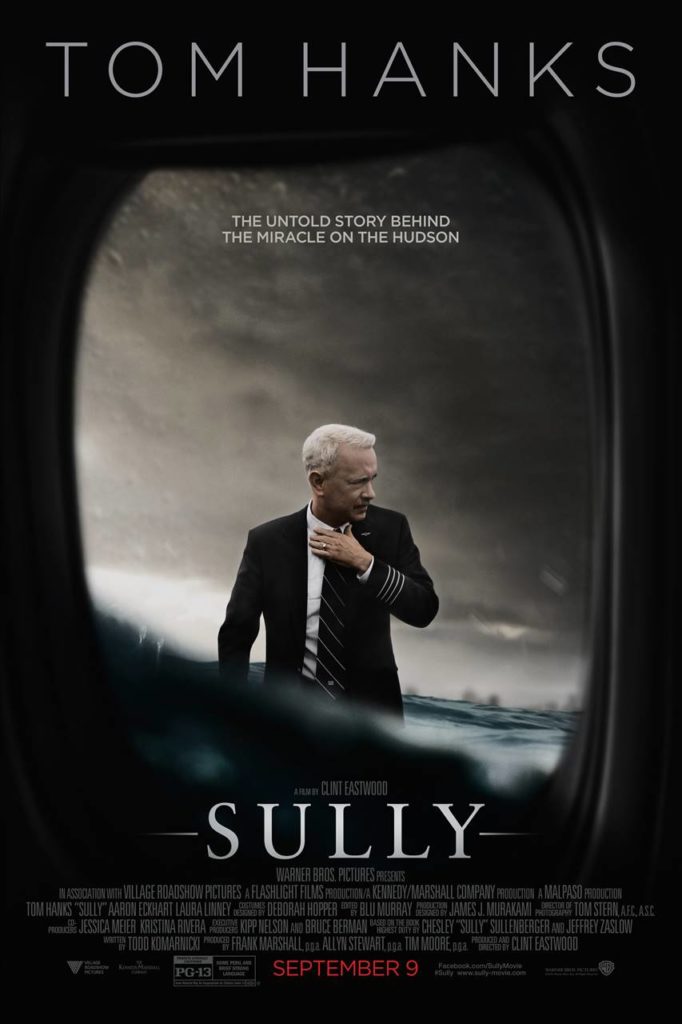 Before we get started, look at that “Sully” poster there, the one featuring Tom Hanks as Captain Chesley Sullenberger, the experienced airline pilot who successfully landed a jetliner on the Hudson River on January 15, 2009. Why is he simply adjusting his collar and looking pensively to his side while standing presumably on the wing of his plane as it sits on the river, the barely-above-freezing water up to his waist? What kind of shot is this? Who thought this was the image to sell this movie? “Look at our hero pilot, half submerged yet totally fine, barely noticing the obviously oncoming hypothermia and totally ignoring the crash landed and partially sunken plane on which he stands. Isn’t this intriguing?” No, it is perplexing. What marketing department fixed this one up and which head honcho looked at it and said “yes, this is exactly how we sell this thing, put it out there now” because this is a bunch of dumb bullshit.
Before we get started, look at that “Sully” poster there, the one featuring Tom Hanks as Captain Chesley Sullenberger, the experienced airline pilot who successfully landed a jetliner on the Hudson River on January 15, 2009. Why is he simply adjusting his collar and looking pensively to his side while standing presumably on the wing of his plane as it sits on the river, the barely-above-freezing water up to his waist? What kind of shot is this? Who thought this was the image to sell this movie? “Look at our hero pilot, half submerged yet totally fine, barely noticing the obviously oncoming hypothermia and totally ignoring the crash landed and partially sunken plane on which he stands. Isn’t this intriguing?” No, it is perplexing. What marketing department fixed this one up and which head honcho looked at it and said “yes, this is exactly how we sell this thing, put it out there now” because this is a bunch of dumb bullshit.
Okay, I feel a little better.
Now on to “Sully.”
Just like most other people, I went into “Sully” being all like “I know what happened in this story, I know everyone survived, this guy was hailed as a hero, so where’s the drama gonna be at?” so as the movie progressed, I was pleasantly surprised to see that there was still some quite compelling drama in those days immediately after this event, and that Captain Sullenberger actually makes for a very interesting character study during this time period. Additionally, I also only had a “read the headlines” understanding of the actual incident, so watching it unfold and seeing how everyone had to work together to save all of these people in such a short window of time and the shit that the passengers had to do to save themselves actually provided a better understanding and appreciation of what really happened that morning.
The story does take a sort of odd structure, breaking up the events of that three and a half minute flight and telling them from different perspectives through the entire movie, gradually building up the climax of the whole film, which is finally showing the entire flight sequence from the viewpoint of the pilots in the cockpit, Sully and his co-pilot Jeff Skiles (Aaron Eckhart). In the meantime, the story focuses on how Sully questioned his decisions in the aftermath of the event and wondered if he put everyone’s lives at risk unnecessarily or if he did the right thing. This is not helped by the investigation of the National Transportation Safety Board, portrayed by director Clint Eastwood as a mostly uncaring and ruthless bureaucratic monster out to point fingers at a human, with Sully and Skiles being the biggest targets for their blame shifting.
The most obvious thing about this movie is its message of how no amount of theorizing or “intelligence” can account human experience and intuition, as Sully’s actions are constantly scrutinized against those of computer and human-piloted simulations and data analysis of the actual events and the plane itself. As a result of this obvious search for a scapegoat, Sully’s doubt gets stronger and he spends a couple of days hearing people call him a hero on television and to his face but having people behind the scenes accuse him of negligence and gravely misreading a situation that could have resulted in many people dying.
We get a lot of Sully’s doubting through his multiple phone conversations with his wife Lorraine (Laura Linney), who is back home with their kids while Sully is stuck in New York City dealing with the NTSB investigation, and it actually becomes a little comical that they have at least half a dozen phone conversations, some of which consist of them lamenting being separated and looking forward to him going home so they can all be together again, and yet this movie never once bothers to show us the two of them together. Throughout the entirety of “Sully” their relationship consists of phone calls, most of which end with Sully ending the conversation cryptically and hanging up on his crying wife. So while these phone calls do add texture to who Sully is and what he was going through at that time, the series of phone calls themselves and the portrayal of his relationship with his wife at that time really doesn’t go anywhere and ends open ended. Maybe “Sully 2” will be about him going home and making sure everything is okay with his wife, because their marriage seemed juuuuuust a little shakey at that moment.
Of course the whole plane sequence is great and the ways they split it up and told it piece by piece along the way was a novel approach that pretty much worked for this particular story, especially since as we all know it does have a happy ending. And getting into the actual investigation and Sully’s inner turmoil in those days after did provide a good amount of drama that does lend credence to the movie’s tagline “the untold story behind the miracle on the Hudson.” “Sully” ends up being a pretty solid movie, nothing to get excited about or run out to see but definitely worth checking out when it is convenient. Hanks is great, Eastwood’s direction is solid, and it is an interesting story, so that makes for a good movie.

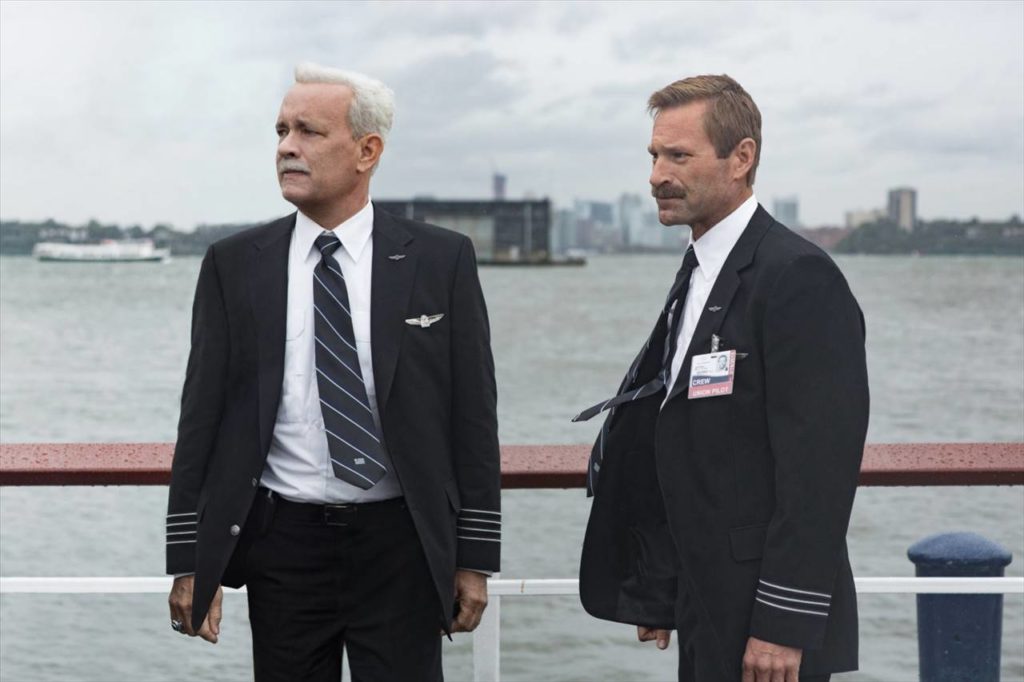
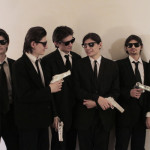 Review: ‘The Wolfpack’
Review: ‘The Wolfpack’ Bonus Episode – Best Villains Ever
Bonus Episode – Best Villains Ever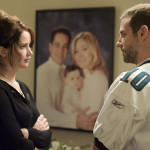 Netflix pick for 2/22/16 – ‘Silver Linings Playbook’
Netflix pick for 2/22/16 – ‘Silver Linings Playbook’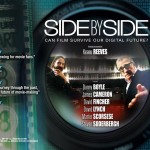 Netflix pick for 5/27/13 – ‘Side By Side’
Netflix pick for 5/27/13 – ‘Side By Side’
Leave a Reply
You must be logged in to post a comment.